Image Archive









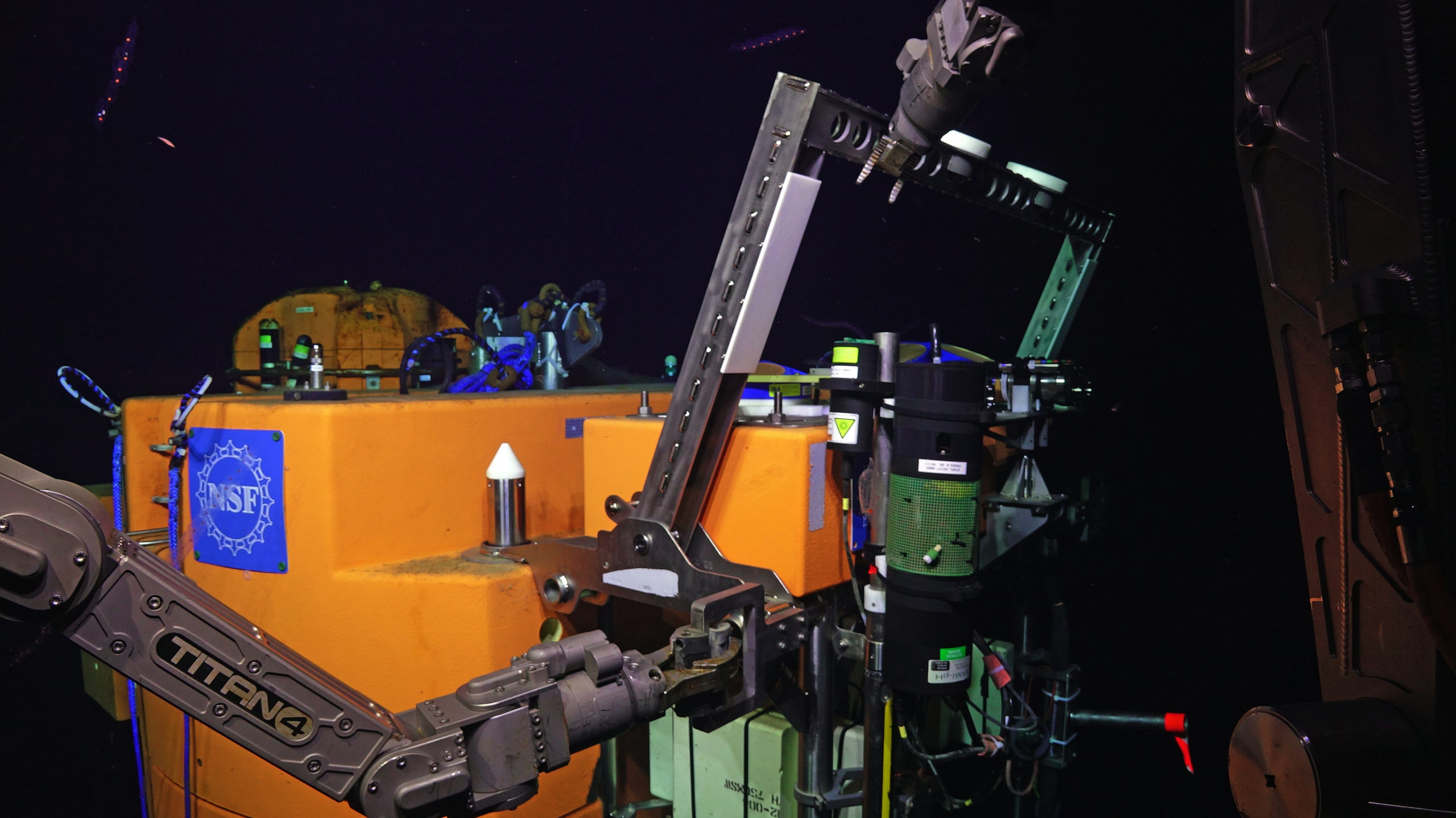


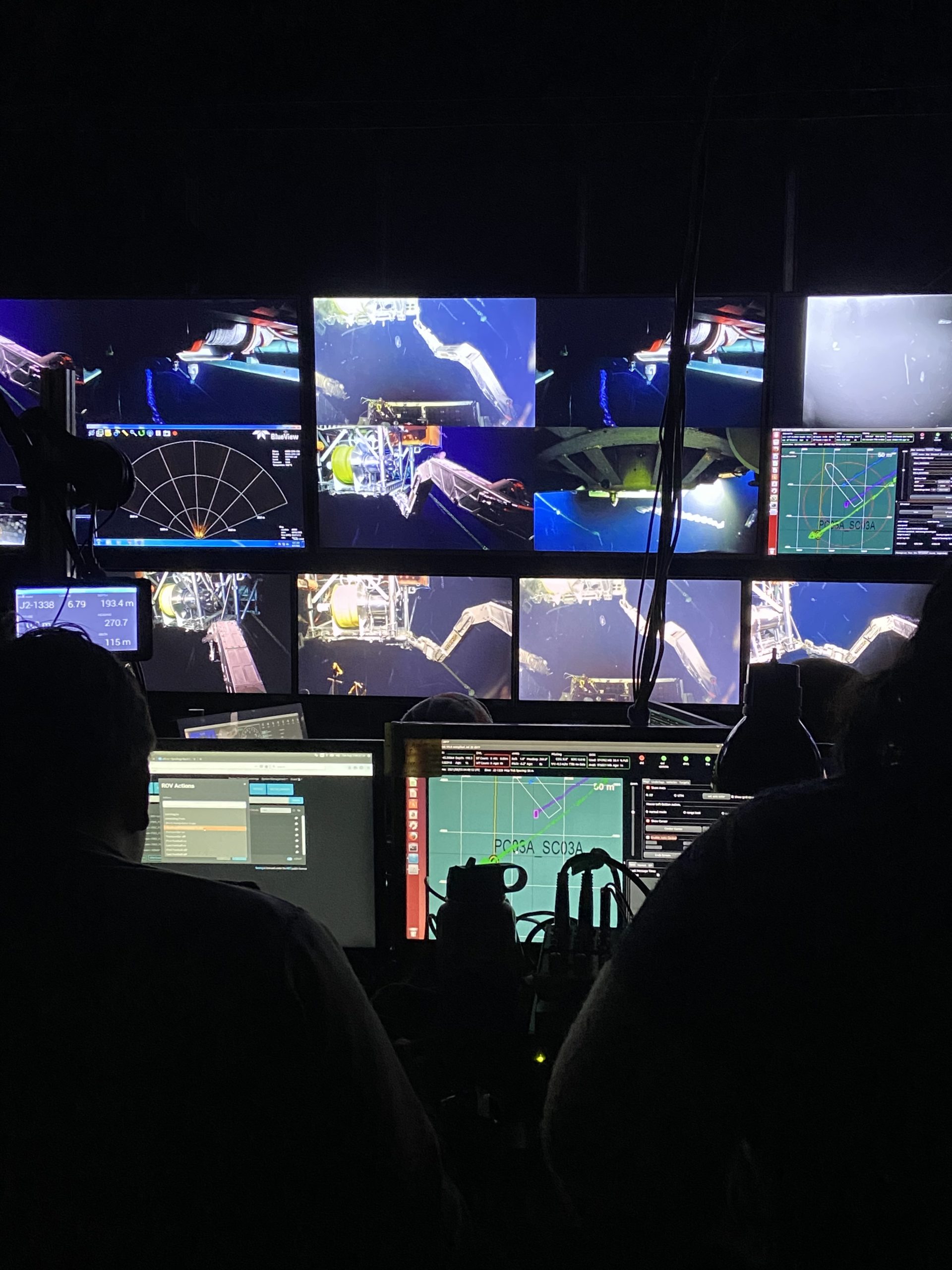


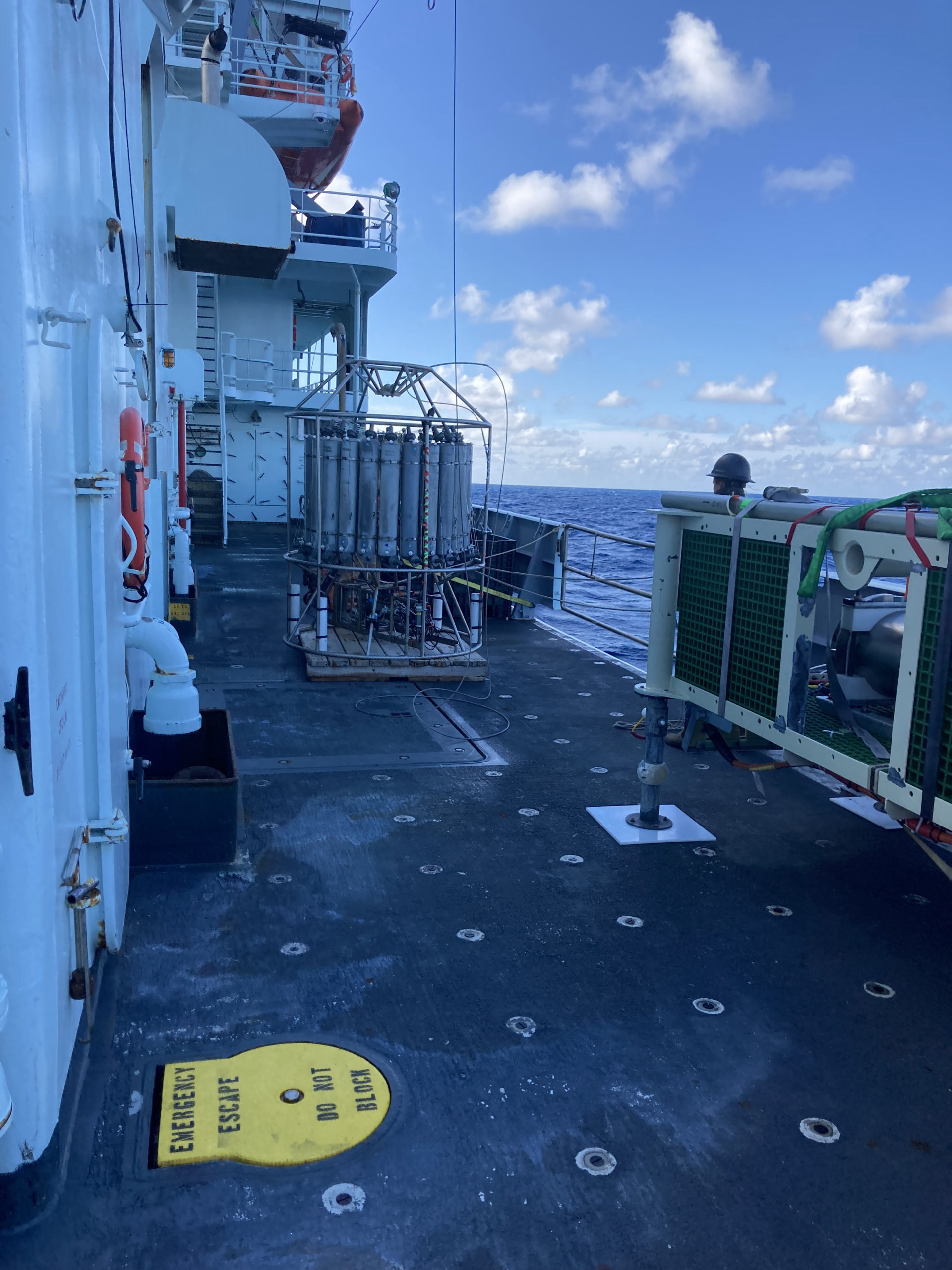



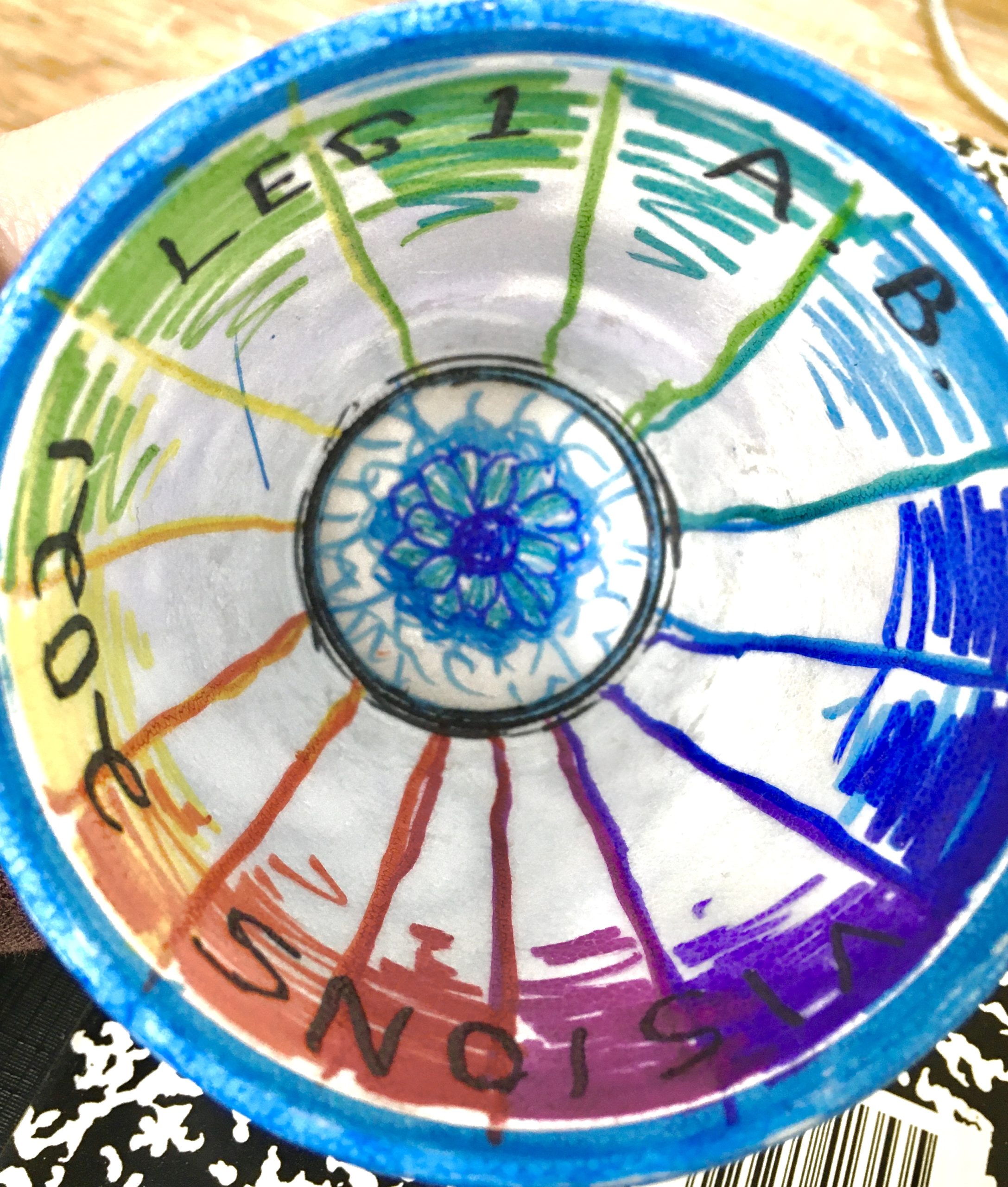



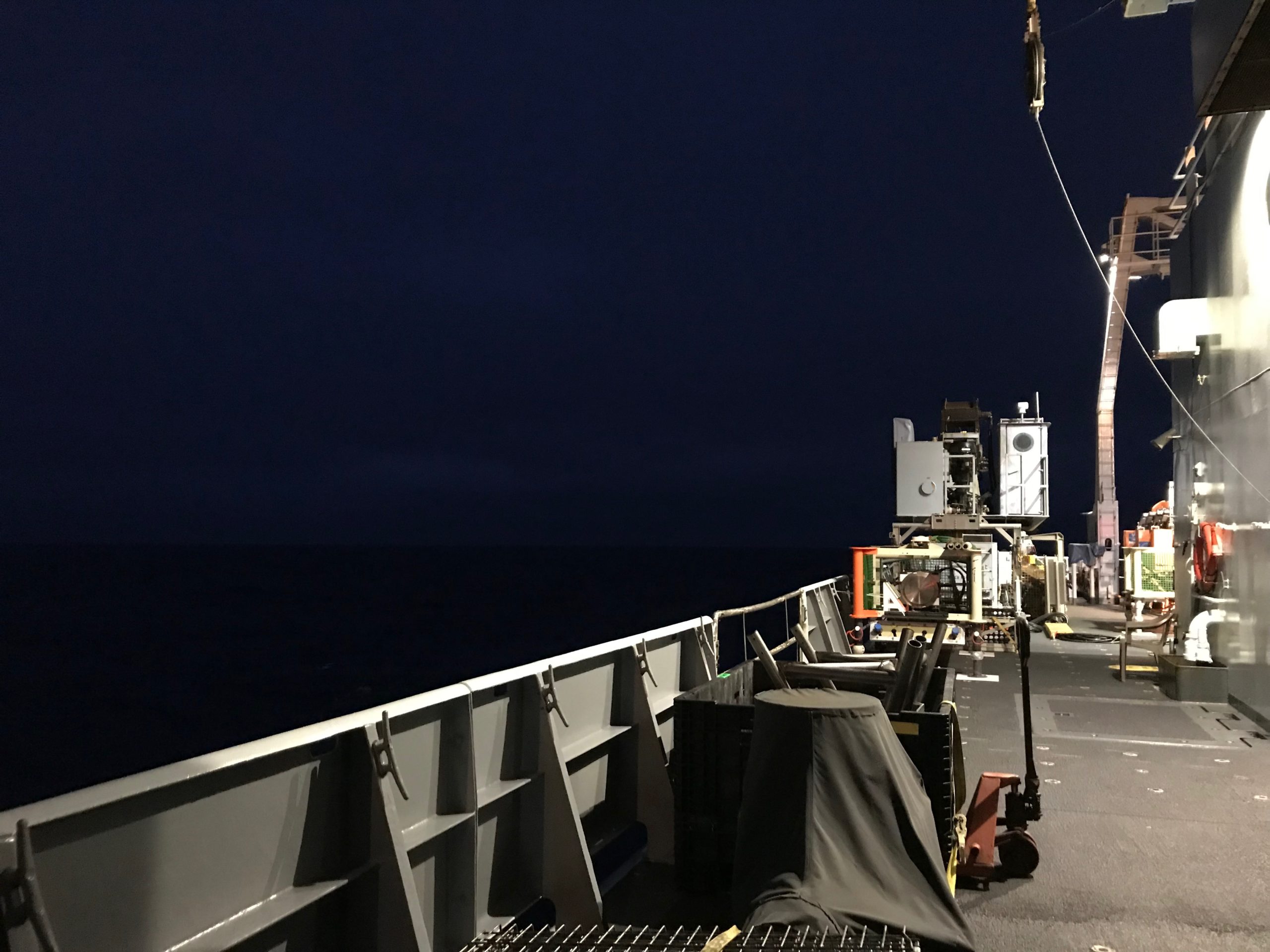
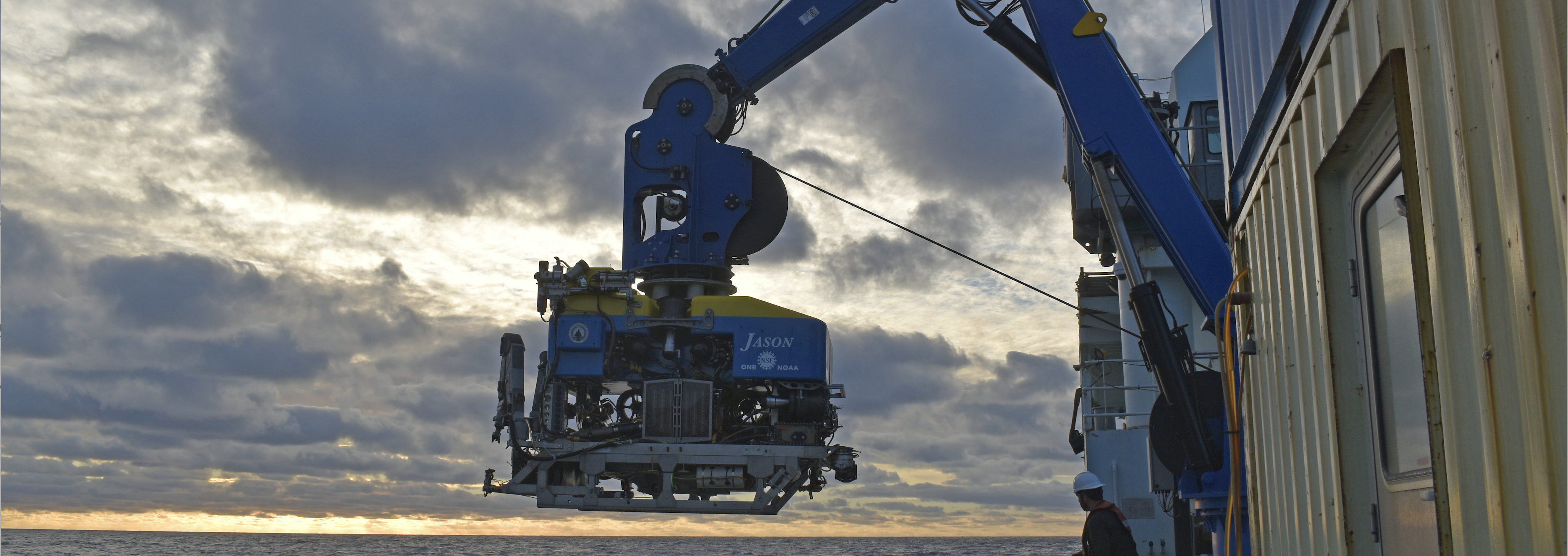




The station in the Jason van where I learned how to do the Jason logging tasks. Credit: C. Fink, University of Washington, V21.

A beautiful storm petrel briefly joined the ship on Leg 1 of VISIONS'21. Credit: M. Elend, University of Washington, V21.

Myriad screens in the Jason control van are used to monitor and conduct operations with the ROV at Axial Base (2600 m). Credit: A. Baker, University of Washington, V21.

The aft deck of the Thompson is lit in the early morning as the ship conducts 24 hr operations. Credit: A. Baker, University of Washington.

Axial Base V21 2020-2021 mooring

The science pod, for the Shallow Profiler Mooring at Axial Base, is latched beneath Jason for installation on the 200 m deep platform. Credit: M. Elend, University of Washington, V21.

A science pod is latched beneath Jason for deployment on the Shallow Profiler Mooring at Axial Base. Credit: M. Elend, University of Washington, V21.

The Shallow Profiler Mooring platform, hosting the instrumented Platform Interface Assembly (left) and winched science pod (right) - both have been in the water since last year. Credit: UW/NSF-OOI/WHOI; V21.

Beautiful chains of salps swim around the top of the Shallow Profiler Mooring at Axial Base. Credit: UW/NSF-OOI/WHOI; V21.

The ROV Jason raises the bale on the platform interface assembly for recovery. Jason will latch into the top of the bale, secured beneath its underbelly. Credit: UW/NSF-OOI/WHOI; V21.

A swarm of beautiful salp aggregates swim around the Shallow Profiler Mooring at Axial Base at a water depth of ~ 600 ft. Credit: UW/NSF-OOI/WHOI; V21.

The first CTD cast goes over the side of the Thompson on Leg 1 of the RCA expedition. Credit: J. Willson, University of Washington, V21.

A look inside the Jason operation van during the first dive taken at 2147 as the vehicle worked at the Axial Base Shallow Profiler Mooring. Credit: J. Willson, University of Washington, V21.

Willson_2021-08-1_Photo1

A beautiful sunrise greets the students onboard the R/V Thompson as she steams towards Axial Base. Credit: C. Fink, University of Washington, V21

The CTD rossette awaits its deployment into the Pacific. Credit: C. Fink, University of Washington, V21.

The inside of the wet lab on the R/V Thompson where CTD samples are brought. Credit: C. Fink, University of Washington, V21.

UW undergraduate Connor Fink, onboard the R/V Thompson as she sails out of Seattle for Leg 1 of the RCA 2021 Expedition. Credit: C. Fink, University of Washington, V21.

The first CTD cast is conducted on the R/V Thompson for the RCA 2021 expedition. Credit: A. Baker, University of Oregon, V21.

A styrofoam cup will be sent down on the CTD to depth. They commonly shrink to about 1.5 inches in height. Credit: A. Baker, Oregon State University, V21.

The sun rises off the fantail of the R/V Thompson. Credit: A. Baker, Oregon State University, V21.

A series of 24 Niskin bottles allow sampling of ocean water at depth: Credit: A. Baker, Oregon State University, V21.

A view across the vast Pacific Ocean from onboard the R/V Thompson. Credit: J. Winter, University of Washington, V21.

Deck of the R/V Thompson approaching dawn. Credit: J. Winter, University of Washington, V21.

M. Elend, V21.

Z. Nachod, V21.

The R/V Thompson at the Ballard Locks, waiting to go into the sound. Credit: Z. Nachod, University of Washington, V21.

J. Winter, V21
- Anemone
- Animal
- Arthropod
- ASHES
- Axial
- Axial Base
- Axial Biology
- Axial Caldera
- Bacteria
- Basalt Lava
- BEP
- Biofouling
- biolgoy
- Biology
- Camds
- Camera
- Camhd
- Central Caldera
- Ciliates
- Cnidaria
- Coastal Biology
- Crab
- Deep Profiler Mooring
- Dive Highlights
- Eastern Caldera
- Echinoderms
- Endurance Array
- Engineering Team
- ENLIGHTEN 10
- Exploratorium
- Fish
- Geology
- HD Camera
- HPIES
- Hydrate Ridge
- Hydrates
- Hydrophone
- Hydrothermal Vents
- Illustration
- Inshore 80 Meters
- Instrument
- International District
- J-BOX
- Jason
- Jellyfish
- Junction Box
- K12
- Lava
- Mollusk
- Moorings
- Nodes
- Nudibranch
- Octopus
- OOI
- Oregon Offshore
- Oregon Offshore 600 m
- Oregon Shelf
- Oregon Slope Base
- People
- PN1B
- PN1D
- Polychaetes
- PPSDN
- Primary Node
- RASFL
- ROCLS
- ROPOS
- ROPOS Dives
- ROV Team
- RV Revelle
- RV Sikuliaq
- RV Thompson
- Salp
- Sample
- SC13
- Science Team
- Sea Cucumber
- Sea Star
- Sea Urchin
- Seafloor
- Seismometer
- Sensors
- Shallow Profiler Mooring
- Shark
- Shipboard
- Shore Station
- Slope Base
- Smoker
- Soft Coral
- Southern Hydrate Ridge
- Sponge
- Squid
- Students
- Students & Guest Participants
- Tmpsf
- Tubeworms
- VISIONS 11 Leg 1
- VISIONS 11 Leg 2
- VISIONS 11 Viewers
- VISIONS 13
- VISIONS 14
- VISIONS 15
- VISIONS 16
- VISIONS 17
- VISIONS 18
- VISIONS 20
- VISIONS 22
- VISIONS 23
- Visualization
